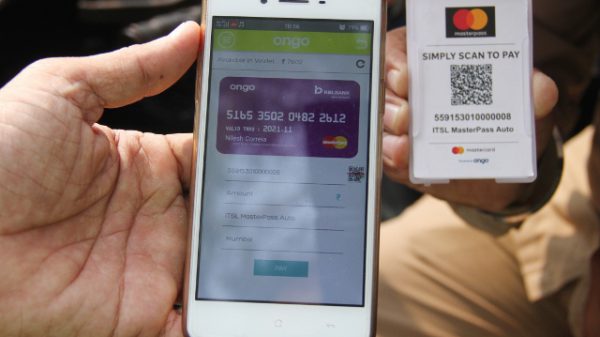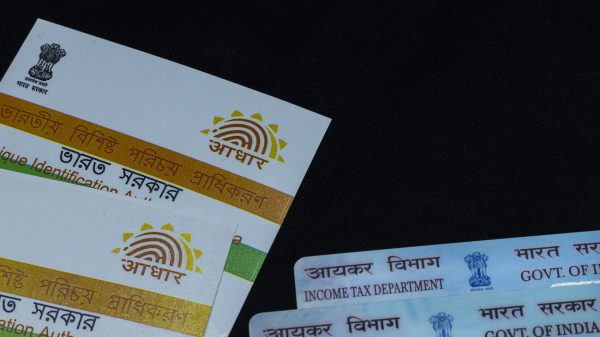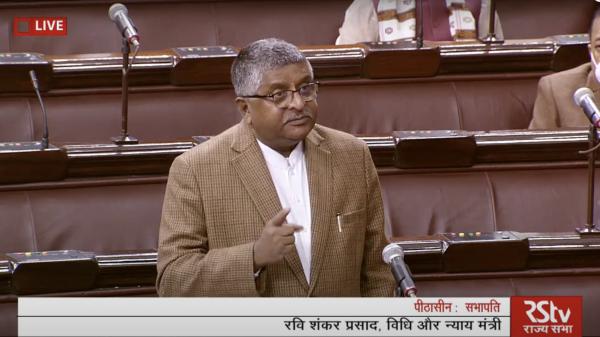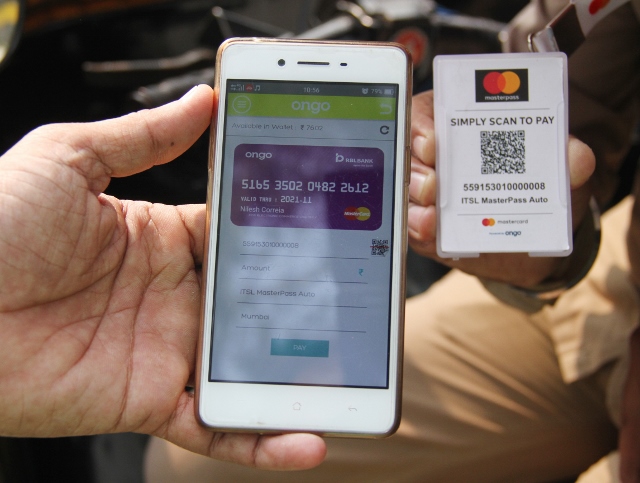Last week, the Reserve Bank of India (RBI) liberalised a few restrictions imposed on pre-paid instruments (PPI) and payment bank players, signalling that the central bank views these companies with greater respect when it comes to handling people’s money. With the widespread usage of digital wallets and the numerous services offered by fintech payment players within an app, the RBI has decided to give these new banking models more room to grow.
The central bank has now allowed digital wallet companies and payment banks to compete with traditional banks for deposits and payments services for a specific market segment. While the adoption of non-bank payments services has largely been driven by a handful of entities in the last few years, banks still have a monopoly on the customer experience when it comes to lending and other services. However, given the success and demand for digital services post-Covid, the regulator and the banks see the benefits of further intermediation between the ownership of assets/liabilities from the customer experience.
This phenomenon, called neo-banking, is the idea that access to financial services should be administered through software rather than brick and mortar entities. Industry experts told MediaNama interest in neo-banks from customers and investors has picked up post the pandemic and that in the next few years, “neo-banks” will be as ubiquitous as digital payments.
What are neo-banks?
The adoption and growth of digital banking channels, credit marketplaces and other platforms has improved by a large margin over the last year. This means that physical interactions with a commercial bank establishment are reducing on aggregate as customers move to fintech platforms or net-banking portals for all their services. This is called neo-banking in the simplest of terms. It can come in three forms:
- Standalone neo-banking software companies
- Licensed payment companies bundling deposit, lending and other financial services products
- Traditional banks with a large digital user base and distribution strategy
There are 15 neo-banking platforms in India, including Razorpay X, Niyo, Open, Juno, Kaleidofin, Fampay and epifi among others. Each of them cater to a specific customer segment and use-case. For instance, Juno is focused on cross-border payments, FamPay and epifi cater to younger customers and Jupiter Money building specific credit products and micro-financial services for the internet-of-things world, it said
“Banks are going to start investing in adjacent services and products. Like a home loan product that can also provide a service that helps people shortlist suitable homes or fitness bands that help you set aside money every single time you work out. They’ll start to develop a customer-centric business model and engage in partnerships and collaborations that will help them give consumers a rich, frictionless, and seamless banking experience”—Jupiter Money blogpost
On the other hand, payment gateways and aggregators also have built a product stack that includes access to lenders, credit cards, payroll and expense management tools, accounting and tax services, supply chain and logistics and other services, all rolled into one platform. What were once financial and business software products that only large businesses or corporate could afford, is now accessible to millions of merchants across the country in return for a fee.
Payment companies like Razorpay and CCAvenue have built banking and credit services for their small-medium-enterprise (SMEs) customers, while Paytm has a payments bank license and other financial services entities. The company caters to both merchants and customers at the same time, while delivering various financial services through just one app. Other payment companies like Google Pay, Amazon Pay, WhatsApp Pay, BharatPe and PhonePe all bundle multiple financial products within their app.
“There are over 42.5 million small and medium-sized businesses throughout India, constituting nearly 95% of the total industrial units in the country. But, only 47% of these businesses have been able to access tools for payments, disbursals, and other vital processes. Furthermore, about 23% of SMEs use ERP software and CRMs. This means, there’s a huge market opportunity for neobanks, especially since they have a lot to offer”—Razorpay blogpost
Banks are opening up to neo-banks
The top banks like the State Bank of India, Kotak Mahindra Bank, HDFC Bank, Axis Bank, RBL Bank, ICICI Bank, Yes Bank and IDFC First Bank are already neo-banks in many ways. They have not only built digital-only deposit and lending products, but also actively work on creating new digital rails or Application Programme Interfaces (APIs) so that third-party companies can handle the customer acquisition side of the business.
“From a regulatory point of view, the PPI changes are aimed at consolidation. Some of the payments banks will graduate to small finance banks and then the PPI becomes a perfect regulated instrument to drive inclusion. The governance cost of running a PPI is lower than a bank, so the objective is to broaden access to finance,” said Madhusudanan R, co-founder, Yap. Yap is a software-as-a-service fintech from M2P Solutions Pvt Ltd that builds APIs for banks and other financial services players.
“Banks have increasingly realised that the traditional way of building and scaling technology doesn’t work. In UPI, the underlying account hasn’t changed, only the way to transmit money has changed. Similarly, banking services will be served by different cohorts of companies coming in and banks willing to change and adapt their distribution strategies to address different customer segments”—Madhusudanan R, co-founder, Yap from M2P Solutions Pvt Ltd.
“The banking industry is at an inflection point because, in the future brands will own the customer journey rather than traditional commercial banks,” Madhusudanan said.
Just as the Unified Payments Interface (UPI) platform turned consumers and merchants away from banks and to fintechs to manage all their payments, the Open Credit Enablement Network (OCEN) could play a similar role in terms of applying for loans. So just like a customer has a SBI or ICICI Bank account but only uses Google Pay for their daily transactions, moving forward a customer may just interact with a few PPI players, fintech apps or standalone neo-banks.
According to Vinay Bagri, co-founder and chief executive officer, Niyo Solutions Inc in the future traditional banks will either change dramatically or they will just provide an intermediate layer for neo-banks to capture the market.
“The banks know how to target specific segments, whereas some of them need fintechs to target the bottom of the pyramid or vice versa, for example. While the SME facing neo-banks compete with banks on this side of their business, consumer neo-banks’ package and deliver the same banking services in a different format.” —Vinay Bagri, co-founder and CEO, Niyo Solutions Inc.
Increased adoption post pandemic
The adoption of neo-banking platforms has been poorer than expected because scaling neo-banks is not easy, especially not during a pandemic. For a payment company, the job is to convince a customer or merchant to download a new app, but for a neo-bank, the job is to convince the user to shift their bank accounts and internal software to a new platform, said Anish Achuthan, co-founder and CEO, OPEN, an SME-focused neo-bank.
Achuthan said acquiring the first 1 million customers is hard when customers have existing relationships with traditional banks. “But post the pandemic, many businesses are organically adopting digital platforms and we have seen more users coming on board every month. Around 60% of our distribution channels are organic and digital. The market opportunity for neo-banks in India is huge because of the various product designs and models that are possible,” he said.
“Our strategy has been to work with Zoho or Quickbooks and other such companies to acquire customers and to get our banking partners to push the platform to their existing base of customers. This helps keep the cash burn and cost of acquisition low. Additionally, as we grow our customer base we can understand a specific segment better and then change our acquisition strategy accordingly.”—Anish Achuthan, co-founder and CEO, OPEN
On the other hand, customer facing neo-banks like Niyo were hit hard by the pandemic. Niyo started out by building a forex product under Niyo Global and now has moved on to the wealth and investments space through Niyo Money and banking services under NiyoX. It has partnered with ICICI Bank, Yes Bank, DCB Bank, Equitas Small Finance Bank and IDFC First Bank.
Since there was virtually no international travel over the last year, volumes on the forex business today are 20–30% of last years’ levels as of today, said Bagri. However, as the economy picked up he saw that another vertical called Niyo Bharat, which caters to blue collar workers, gained traction.
“If you look at it globally, a lot of growth for consumer neo-banks comes from virility and referrals. Just look at how Google Pay and PhonePe captured the UPI market. So that has been working for us as well. We have 2 million users and we process around Rs 600-700 crore worth of loading and spending on the pre-paid card” —Vinay Bagri, co-founder and CEO, Niyo Solutions Inc.
Investments in neo-banks to pickup
While the big payment players raised over $1.1 billion last year and banks doubled down on their digital initiatives, funding to standalone neo-banks decreased to $21 million compared to $78 million in 2019. The Indian ne0-banking market is estimated to be worth $50 million in India.
Some of this excitement to tap the Indian SME and consumer market has traveled abroad. London-based neo-bank Tide joined hands with RBL Bank to build a new banking platform for small-medium-enterprises in the country. The combine plan to acquire 25,000 customers by next year and up to 2 million customers over the next 5 years. Similarly, another UK-based neo-bank Revolut recently announced plans to expand to India and other Asian markets over the next 18 months.
“During the early days most investors were skeptical about the neo-banking story in India, unlike their peers outside,” Achuthan said. This year will be different as global capital is hunting for good neo-banks to invest in, he said.
“Though there are some domestic venture capital funds investing in neo-banks, most of the funding comes from global investors. On the SME side, we seem a lot more funding coming in the next few months from foreign investors who are already invested. Most investors see value on the SME side, whereas there is no clear roadmap on how consumer neo-banks will scale up, because banks in India on the retail side are fairly strong”—Anish , co-founder and CEO, OPEN
One reason why investments dropped last year is because scaling neo-banks takes time and since there are only a handful of banks to work with, it can limit the options for a customer or merchant, the experts said. They added that neo-banks require a lot of capital to create a brand that can scale fast, which only one or two players currently can do.
“Globally, the consumer neo-bank players raised the most amount of funding as you need to create a brand and attract users. They needed to raise significant amounts of capital because the life of the customer is 5–10 years and there is a significant payback period for you,” said Bagri.
Like Achuthan, Bagri is optimistic that funding to standalone neo-banks would improve this year, as the global wave of neo-bank funding will turn to India and begin influencing domestic investors.
Also Read
- The unintended consequence of RBI’s new card rules
- Lending fintechs warrant novel regulation methods to address risks, says RBI governor Shaktikanta Das
- Unicas’ cryptocurrency based neo-bank is now in three states















